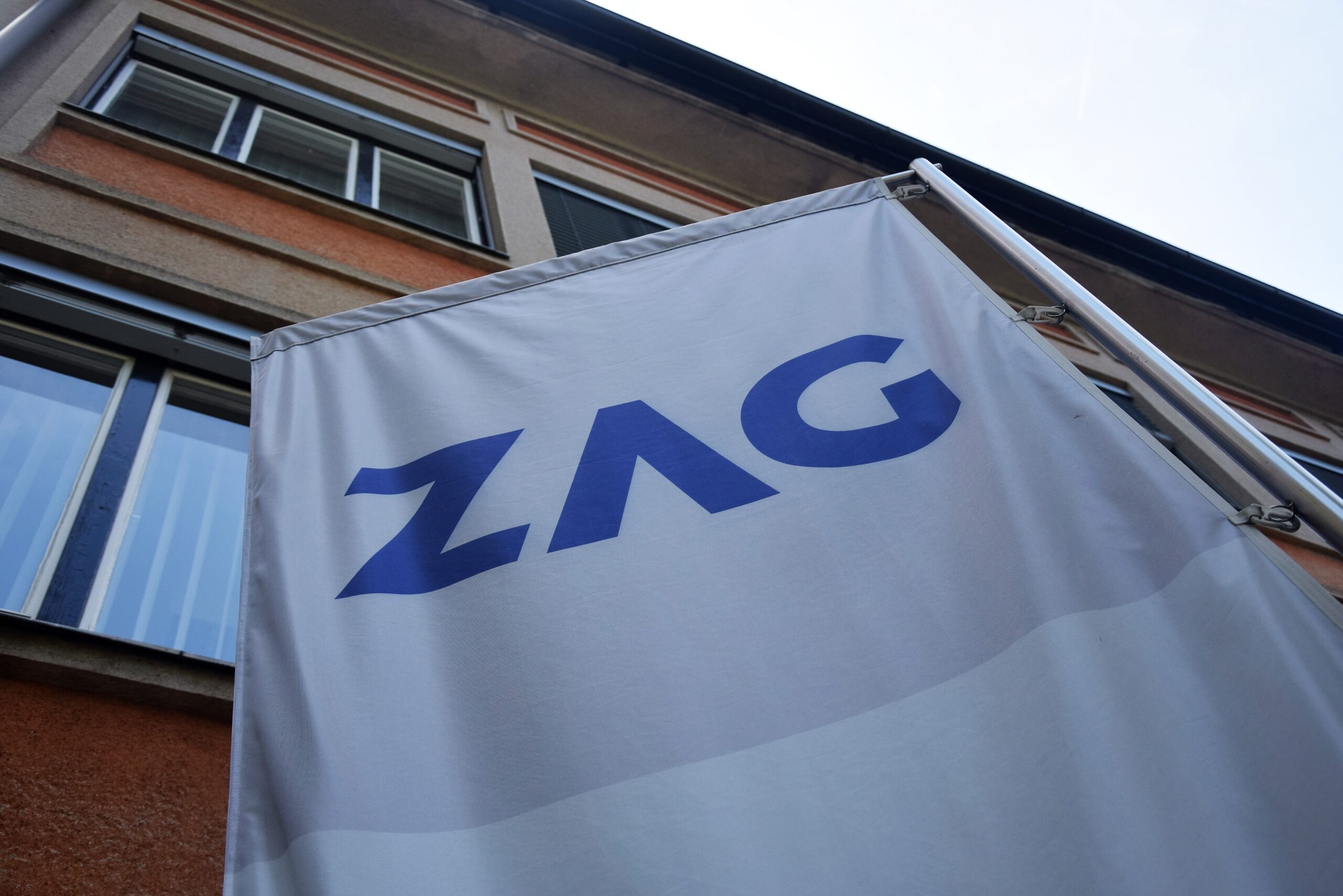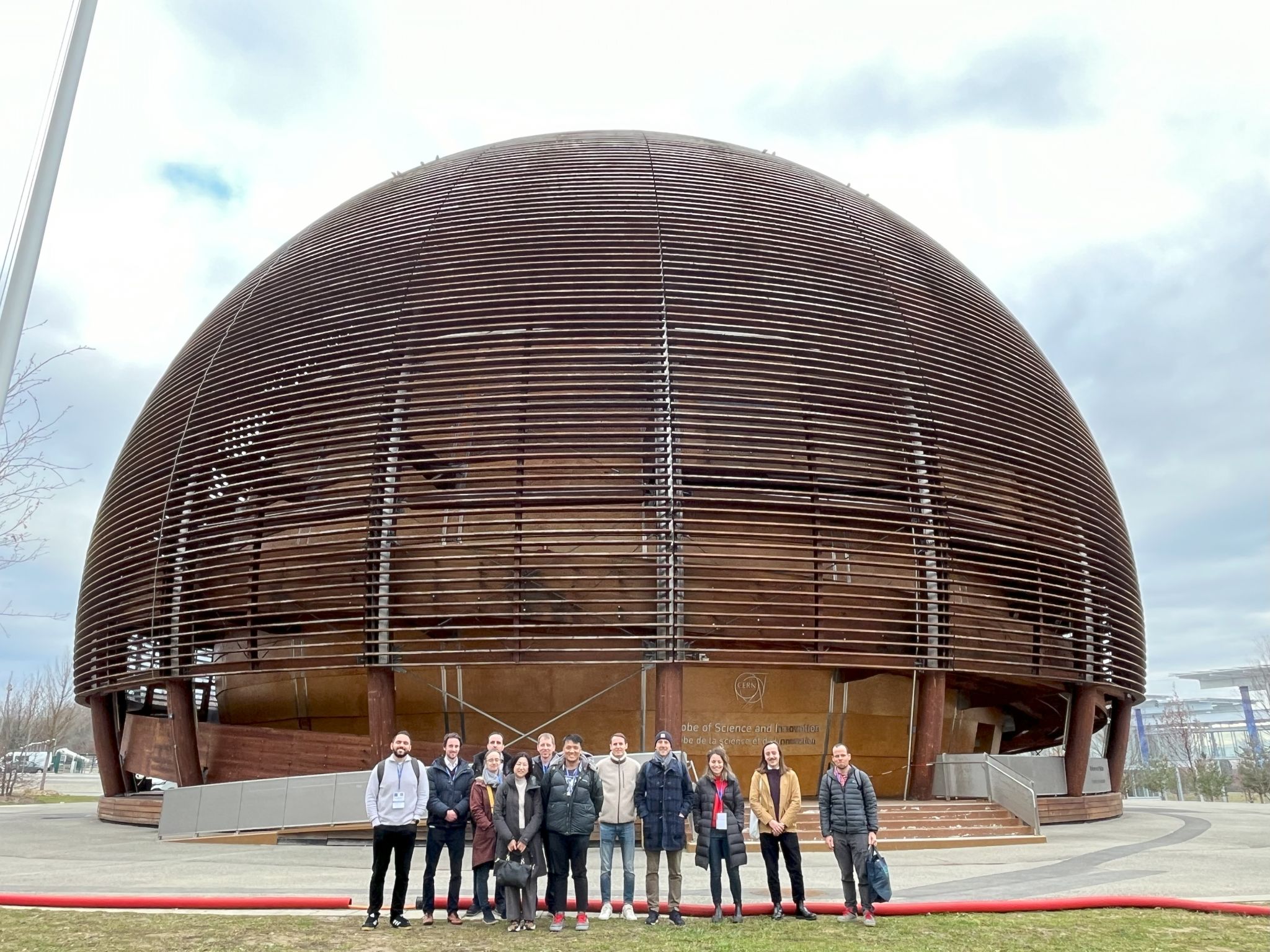ZAG in 12 research projects
21.12.2023
The past year has been a very successful one for our public research institute. Namely, the Slovenian National Building and Civil Engineering Institute (ZAG) has launched a number of projects that fall within the scope of funding from the Slovenian Research And Innovation Agency (ARIS).
We are proud to have secured 12 research projects, what is so far the highest number in the history of our organization. Of these, we are coordinating seven projects and are partners in five projects.
ZAG as coordinator of research projects
ZAG is the coordinator in seven research projects: large fundamental, two small fundamental, two small applied and two projects of the targeted research program. The descriptions of each project are summarized below in that order.
- Mining the technosphere for efficient use of resources and improving state of the environment
Project leader: dr. Ana Mladenović, univ. dipl. inž. geol.
ARIS project code: J7-50228
Project partners: ZAG, Institut Jožef Stefan, Scientific Research Centre Bistra Ptuj, National Institute of Chemistry, Javne službe Ptuj, d. o. o., IRGO Consulting, d. o. o., NERINVEST nepremičnine, ekologija, rudarstvo d. o. o.
The research is focused on development of new solutions in the field of enhanced landfill mining of wastes, accumulated in numerous landfills across EU, and to unlock the potential which have this waste as a source of raw materials. On the other hand, these solutions are also intended to improve the state of the environment by enabling simultaneously the rehabilitation of landfills. Disposed wastes, created as a result of human activities, are in the light of shortage of raw materials, already recognized as deposits of secondary raw materials in the anthropogenic environmental compartment; called the technosphere. Mining the technosphere to valorise and exploit these resources can be carried out by similar mining practices as mining of the geological ore deposits in the lithosphere. In both cases, the principles of geological sciences are involved in all phases: (i) exploration, (ii) exploitation, (iii) extraction, (iv) development of sustainable low-carbon products, (v) life-cycle and techno-economic analysis, and (vi) environmental risk analysis related to mitigation of potential negative impacts in all phases. The main aim of this project is to develop, on the basis of fundamental laboratory and field research, novel key phases of technosphere mining within a concept of enhanced landfill mining. Validation of the developed solutions will be made by demonstrating the enhanced landfill mining practice for the first time in Slovenia in the case of two selected landfills, the municipal landfill and the metallurgical landfill. By this it will be proved that the mining process can be performed safely, efficiently and that it provides quality raw materials and significantly lower environmental footprint compared to conventional lithosphere mining.
Extraction methods will be studied and validated on steel slag (metals), metallurgical dust (extraction of Zn) and plastics (pyrolysis oil, char, and gas). Selected materials from landfill exploitation and extraction processes will be recycled in low-carbon construction products. Life cycle calculations and economic calculations will be performed at all mining stages. In order to mitigate the NIMBY effect, a method will be developed to involve civil society and other stakeholders. Within the project, new fundamental knowledge and experience will be acquired on enhanced landfill mining the technosphere, essential for further transfer and replication of this service.
- Geological and lithogeochemical characterization of Slovenian dolomites including Mg extraction tests
Project leader: dr. Lea Žibret, univ. dipl. inž. geol.
ARIS project code: J1-50032
Project partners: ZAG, Geološki zavod Slovenije (GeoZS), Faculty of Chemistry and Chemical Technology (FKKT UL)
European industry is highly dependent on mineral raw materials, and most of them are imported. One of such commodities is Magnesium (Mg). Due to its light-weight Mg is mainly used in aluminium and other alloys and it is suitable also for battery production. Mg is a metal which is produced from brines, or from different mineral raw materials (serpentine, magnesite, dolomite).
On the territory of Slovenia carbonate rocks are very common, easily accessible and therefore widely exploited in quarries. Thick deposits of relatively pure dolomites are widely present. The aim of the project is to evaluate the possibility of using Slovenian dolomites for the production of Mg. Chemical, mineralogical, sedimentological and microstructural characteristics of dolomite rocks from various geological formations on the territory of Slovenia will be investigated. The recognized dolomitization events will be placed into regional geodynamic context of the area. Finally, experimental proof of concept of Mg extraction from domestic dolomites will be demonstrated at laboratory level.
- Improving B-WIM performance with big data and Artificial Intelligence
Project leader: dr. Aleš Žnidarič, univ. dipl. inž. grad.
ARIS project code: J7-50096 | Project acronym: BrAId
Project partners: ZAG, The Faculty of Mathematics, Natural Sciences and Information Technologies (FAMNIT UP)
The SiWIM® bridge weigh-in-motion system, developed within the EC research project WAVE and afterwards as a standalone product, has a unique ability to store wide range of information, a prerequisite to applying big-data and AI principles. Ensuring that B-WIM results are sufficiently accurate and erroneous data is reliably detected requires efficient data quality controls (QC) of WIM data. The current approach to QC is heuristic based and focuses on the most common heavy vehicles, like the 5-axle semi-trailers. Achieving consistent high accuracy of B-WIM results requires a more autonomous approach that will apply artificial intelligence methods to the real-world dataset. Applying such fully automated data QC procedures will allow to expand B-WIM applications to the legal enforcement, according to the latest trends in the WIM field.
One of the significant shortcomings of the current WIM and B-WIM research field is the lack of evaluation studies based on realistic datasets of sufficient size. To fill this void, the BrAId project will evaluate a large, labelled dataset of several 100.000 vehicles, part of which will be made publicly available to other researchers.
- Two-filament 3D Printing with Concrete and Earth
Project leader: dr. Lucija Hanžič, univ. dipl. inž. grad.
ARIS project code: L2-50045 | Project acronym: 2F-3D Print
Project partners: ZAG, company Tajfun, University of Ljubljana
3D printing is additive manufacturing, in which a product is formed by adding material. This technology is spreading to the construction industry, where concrete is the center of attention. 3D printing with concrete can contribute to the digitization and automation of construction production. We suggest printing with two filaments, where a soft plastic filament connects layers of hard plastic filaments. The design of such filaments is undemanding. For structural analysis of printed elements, methods for masonry structures are more suitable. The goals of the project are to develop a dual-nozzle printhead, define rheological parameters for both filaments, and demonstrate dual-filament 3D printing.
- Evaluation and improvement of fire performance of building envelope systems with emphasis on ETICS systems containing EPS with or without flame retardants
Project leader: prof. Grunde Jomaas
ARIS project code: L2-50046
Project partners: ZAG, company Rockwool A/S
The most common type of facades used in new construction and renovation projects are ETICS (External Thermal Insulation Composite System, 65%), cavity walls (19%) and ventilated facades (12%). ETICS systems are also the predominant type of façades installed in Slovenia for renovation of existing buildings and for new constructions. Considering the significant market of ETICS systems throughout Europe, along with the fire risk associated with façade systems, it is of great priority for the society and research community to increase the understanding of the fire behaviour of ETICS. The project will carry out an extensive experimental study that combines large-scale and mid-scale experiments to identify the sensitivity to failure of ETICS systems in a fire scenario.
- Preparation of the basis for a methodology proposal for assessing the risk to human health due to the release of volatile and semi-volatile organic compounds from construction and finishing materials and equipment into the indoor air of premises
Project leader: dr. Peter Nadrah, mag. farm.
ARIS project code: V3-2323 | Project acronym: VOC
Project partners: ZAG, Nacionalni inštitut za javno zdravje (NIJZ)
People spend a large proportion of our lives indoors, so indoor air quality is crucial for health and quality of life. Volatile and semi-volatile organic compounds (VOCs and SVOCs) are an important group of pollutants that affect people’s health, well-being and productivity, especially indoors. The sources of these compounds are building and finishing materials and equipment. The extent of emissions of VOCs and SVOCs is not well known and there is insufficient information on the impact of these materials on human health and well-being. The project will analyse commonly used building and finishing materials and equipment in selected public buildings in Slovenia. We will review the literature on the release of VOCs and SVOCs from these materials and combine the data into a report that will form the basis for the subsequent methodology proposal for assessing the risk to human health due to the release of VOCs and SVOCs from construction and finishing materials and equipment.
- Ensuring the quality of sustainable timber construction
Project leader: dr. Tomaž Pazlar, univ. dipl. inž. grad.
ARIS project code: V2-2350
Project partners: ZAG, Biotechnical Faculty (BF UL), CBD gradbeno in poslovno projektiranje, d. o. o.
New knowledge in the field of construction in the broadest sense of the word, environmental protection issues and general changes in the lives of individuals and society as a whole have been in recent years reflected as a departure from established methods of construction back towards timber construction. The once symbolic share of timber construction has been rising in recent years and follows the trends in modern European countries which Slovenia wants to emulate.
Slovenia can be successful in this, after all, wood is the only raw material that we have proverbially in abundance, but unfortunately we are not the most skilled at using it. With the project, we therefore want to address, in addition to timber construction, the field of timber-based construction materials, which represent a starting point for efficient and successful timber construction. The specificity of wood and wood-based materials requires knowledge of its or their specifics: Only properly selected and installed timber-based materials can be a building block of sustainable construction. The existing technical specification focuses mainly on the area of products, while the quality of timber construction itself is not specifically defined or regulated. Project addresses the review of the current situation in the field of timber construction, including construction materials based on wood, identify shortcomings in the field of technical specification and regulation, and propose guidelines for ensuring the quality of sustainable timber construction, which might also present the shift for possible changes to the legislation in the future.
ZAG as partner in research projects
In addition to projects above, ZAG is also partner in two large fundamental and three small fundamental research projects, the descriptions of which follow in this order below:
- Growth potential and wood properties of selected tree species of various provenances: modification options, prospects and challenges in response to climate change
Project leader: prof. dr. Miha Humar
ARIS project code: J7-50231 | Project acronym: GROWTH
Project partners: Biotechnical Faculty (BF UL), ZAG, Slovenian Forestry Institute (GIS)
Responsible person at ZAG: izr. prof. dr. Andrijana Sever Škapin
Forests are significantly affected by climate change. Tree species or provenances that are more resilient to drought or wind damage may have a better chance of survival under such environments. The radial growth potential and wood properties of selected tree species and provenances are investigated at different sites in Slovenia. To improve resilience and reduce flammability, wood can be modified. Each of the existing methods still has various disadvantages, which we aim to address or minimise in the present project. The main objective is to identify the optimal method for non-biocidal protection of target wood species against decay and to increase the fire performance without significantly changing the relevant positive properties. In addition, concepts for improving product performance and properties through the use of laminates made from hardwood species are being investigated. The use of hardwoods species is motivated by climate change and changing growth conditions and favourable mechanical properties in terms of material strength and stiffness. The proposed research is complex as it combines the latest knowledge from different research groups in forestry, wood science and technology, and the construction industry in the areas of forest genetics, tree biology, wood structure, mechanical properties and durability.
- Next generation analytical tools for heritage science
Project leader: prof. dr. Irena Kralj Cigić
ARIS project code: J7-50226
Project partners: Faculty of Chemistry and Chemical Technology (FKKT UL), Faculty of Chemistry and Chemical Technology (FKKT UM), National Institute of Chemistry (KI), Biotechnical Faculty (BF UL), ZAG, Institute for the Protection of Cultural Heritage of Slovenia (ZVKDS), Faculty of Arts (FF UL), National and University Library (NUK)
Responsible person at ZAG: dr. Lidija Korat
NextGenHS focuses on the development of new analytical methods and approaches to the understanding of historic materials, for the purpose of their better interpretation, management and conservation. This requires a broad interdisciplinary collaboration of analytical and material scientists, as scientific interpretation of results cannot be achieved without a deep understanding of material structure and decay processes. This proposal addresses some of the most often encountered and as yet unresolved analytical challenges in heritage science. The overarching objective of the project is to develop, evaluate and demonstrate the applicability of four analytical tools/approaches as yet not included in the provision of the ESFRI European Research Infrastructure for Heritage science, E-RIHS, supported by its gap analysis documents, and supporting target communities of users in the domains of heritage conservation, archaeology and building conservation.
The project is a collaboration of research groups from different scientific fields: in the field of analytical chemistry (primary field), supported by ULFKKT, UM and KI, and material science (secondary field), supported by UL BF, ZAG, and ZVKDS. The impact of this research is in the humanities, represented by UL FF and NUL. To a great extent, cutting-edge development of analytical methodologies and techniques in the field of heritage science is enabled by the European Research Infrastructure for Heritage Science (E-RIHS) with coordinator Professor Dr Irena Kralj-Cigić.
- Effects of biodegradable microplastics on freshwater and terrestrial organisms
Project leader: izr. prof dr. Anita Jemec Kokalj
ARIS project code: J1-50014 | Project acronym: microBIOplast
Project partners: Biotechnical Faculty (BF UL), ZAG, Faculty of Chemistry and Chemical Technology (FKKT UL), National Institute of Chemistry (KI)
Responsible person at ZAG: izr. prof. dr. Andrijana Sever Škapin
The project aims to study the effects of biodegradable microplastics on a range of freshwater and terrestrial organisms. The selection of plastics will include various biobased and fossil-based biodegradable materials, including non-biodegradable reference materials comparison. The core of the project will be the investigation of effects on organisms. A number of commonly used freshwater and terrestrial organisms representing different trophic positions (primary producers and consumers) and taxonomic positions (protozoa, invertebrates, plants) will be included. The project will provide new knowledge about the biodegradation of plastics in the natural environment, the production of microplastduring biodegradation, and a holistic understanding of the responses of organisms to exposure to microplastics at different levels of biologicacomplexity.
- Innovative timber products from thermo-hydro-mechanically densified wood with improved physical, mechanical and fire properties
Project leader: dr. Andreja Kutnar
ARIS project code: J4-50132 | Project acronym: WoDeFi
Project partners: Innorenew CoE, ZAG
Responsible person at ZAG: dr. Ulises Rojas Alva
Wood as an engineering material has a wide range of applications: from house construction and commercial buildings, to furniture, joinery, and other industrial products. As the use of wood is closely linked to the human living environment, the materials incorporated must be safe, and fire safety, in particular, is essential for mitigating risks to life and preventing extensive property damage.
In general, research on engineered wood focuses on the quality of mechanical-physical properties, jointing and surface finishing. However, less research has been carried out related to material fire safety. WoDeFi will develop new wood products with improved fire and mechanical-physical properties. Different materials will be added to the wood, and it will be treated in different ways to change its structure and properties. These new material are expected to be used in environments with increased fire risk and will have an impact on the added value of wood.
- Sustainable long-term use of timber structures – fire and post-fire deterministic and probabilistic solutions
Project leader: dr. Robert Pečenko, univ. dipl. inž. grad.
ARIS project code: J2-50063
Project partners: ZAG, Faculty of Civil and Geodetic Engineering (FGG UL), Biotechnical Faculty (BF UL)
Responsible person at ZAG: dr. Urška Blumauer, mag. inž. grad.
In recent decades, environmental challenges have become increasingly important. In 2021, European Commission launched a European Green Deal strategy, with the main purpose to promote a circular economy with green technology, create a sustainable industry and transport, and reduce emissions and pollution. Among the industries that considerably contribute to degradation and climate change is undoubtedly civil engineering, which is still based on a heavy concrete and steel industry that causes many negative impacts. Therefore, civil engineering needs a complete renovation, in line with the goals of the European Green Deal. The solution is offered in the more widespread and efficient use of wood as a building material which does not leave negative impacts typical of steel or concrete. When designing environmentally friendly and sustainable buildings, wood is almost indispensable material and often represents the whole or a large part of the load-bearing system. Thus, a challenge to better design timber buildings, in an efficient, economical, environmentally friendly, and sustainable way is always present and topical. A great challenge in ensuring sustainable timber structures represents the requirement for fire safety and fire resistance of the structure. In addition, for a sustainable and log-term use, it is also important to design a timber building so it can survive a fire event during its lifetime, while it can still be normally used after fire, without changing its load bearing elements. For this, the phenomena that take place during fire exposure as well as after fire exposure needs to be known. Since the problem of safety in fire and post-fire conditions is very complex, the key is merging experts of different disciplines and scientists with the introduction of innovative experimental methods and numerical models. The main objective of the project is to develop new advanced experimental methods for determining the physical, rheological and mechanical properties of structural timber and development of a new numerical models for predicting the long-term behaviour of timber structures in fire and post-fire conditions.




